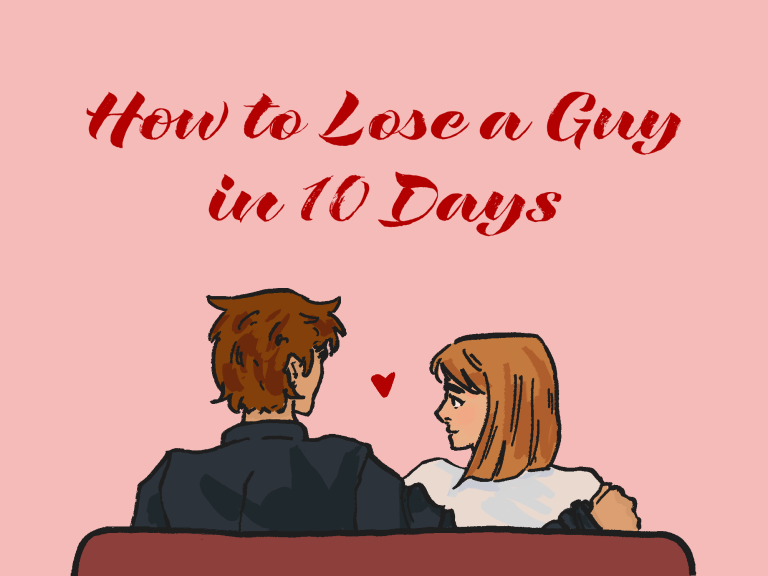You may have heard the recently trending TikTok sound of a woman singing, “And all the girls dreamed that they’d be Ben’s partner,” to the tune of Carly Simon’s “You’re so Vain.”
That woman is a movie character named Andie Anderson. As the star writer for a women’s magazine called Composure, Andie wishes she could cover more serious topics. When her best friend gets broken up with (again), she is inspired to write an article titled “How to lose a guy in 10 days” by committing all the dating faux-pas known to drive men away. She randomly selects Benjamin Barry as her target — not knowing he has incidentally just made a bet that he can make any woman fall in love with him in 10 days.
This is the plot of “How to Lose a Guy in 10 Days,” a romantic comedy starring Kate Hudson as Andie and Matthew McConaughey as Benjamin. The film is celebrating its twentieth anniversary this year.
Yet, despite its old age, “How to Lose a Guy in 10 Days” has stayed socially relevant, from trending on TikTok to inspiring prom dresses. It remains as a timeless classic that can be revisited over and over again.
The 2002 movie has stayed relevant because of its relative modernity. The 2000s were an era of heteronormative gender stereotypes which were heavily reinforced in films. However, at the time of its release, “How to Lose a Guy in 10 Days” broke the mold of the woman falling for the man and dedicating her entire life to him.
Andie represented a new kind of female protagonist — one that is ambitious, career-driven and not defined by her relationships but rather her own sense of self-worth. She wants to write about politics and current events but is forced into her job as the “How To” girl, writing insipid stories about relationships and men. Feeling trapped, she is driven to write an article that pokes fun at the stereotypes of dating.
Women are expected to take desperate measures to attract men, yet Andie’s character is critical of the pressures and expectations that women face when it comes to romance.
Also, the main characters’ character development, although trite, is perfectly-done. Andie, the hard-headed and stubborn female lead, learns that there is more to life than just fighting for her career and eventually accepts love into her life. On the other hand, Benjamin evolves from the stereotypical straight man to one that cares about more than just beer and basketball, one that develops emotions and the capabilities to express those emotions.
For those watching this movie for the first time, I just want to emphasize that I am not lauding this movie as the paragon of modern feminism. In fact, quite the opposite is true — when watching this movie, I thought, “Wow, they’re really going with the ‘not like other girls’ trope.”
However, we must remember that this was made 20 years ago. For its time, “How to Lose a Guy in 10 Days” was unique among romantic comedies for exploring stereotypes. Having Benjamin chase Andie down in the falling action of the movie was a bold choice because the girl was leaving the man for once.
“How to Lose a Guy in 10 Days” is not the movie that will convince you of the importance of feminism. However, it is the movie that you can consistently count on, one that you can watch over and over again and never get tired of, even twenty years after its release.
